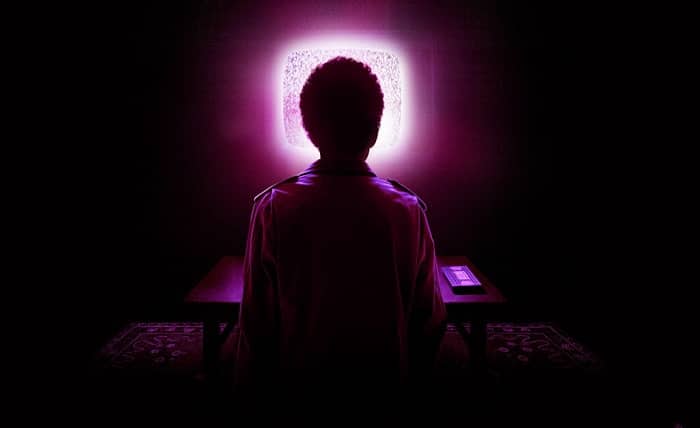I Saw the TV Glow: Unpacking the Mystique of Late-Night Viewing

The phrase “I saw the TV glow” evokes a vivid image of late-night television viewing, a common experience for many. This act, often a quiet, introspective time, offers more than just entertainment; it serves as a comforting end to the day for some, while for others, it’s a silent companion during insomnia-driven hours. Late-night TV has its own unique appeal, providing a mix of shows that range from reruns of classic sitcoms to late-night talk shows and movies, all casting a literal and metaphorical glow that fills living rooms in the quiet of night.
The Emotional Impact of Late-Night Viewing
“I saw the TV glow” often signifies more than just the physical act of watching television; it symbolizes the emotional states that late-night viewing can induce. For many, the TV’s glow represents solace, a way to unwind after a stressful day. It can also be a source of companionship, filling the silence of an otherwise empty house. However, this practice also has its downsides, such as disrupted sleep patterns and potential feelings of loneliness that might linger beyond the screen’s light.
The Cultural Phenomenon of Late-Night Shows
Late-night television programming has long been a staple in many cultures, particularly with iconic shows that have shaped the format. Shows like “The Tonight Show” and “Saturday Night Live” have become more than just entertainment; they are cultural phenomena that provide commentary on current events and showcase celebrity interviews and sketches. The phrase “I saw the TV glow” during these shows connects viewers to a larger shared experience, as they participate in the collective consumption of popular culture.
Psychological Effects of Watching TV at Night
“I saw the TV glow” also brings to light the psychological impacts of consuming television before bed. Studies suggest that exposure to the blue light emitted by TV screens can inhibit the production of melatonin, the hormone responsible for regulating sleep. This can lead to difficulty falling asleep or poor quality of sleep. Additionally, the content watched can influence dreams and the subconscious, often carrying over the day’s anxieties or media-induced stress.
The Role of Nostalgia in Late-Night Viewing
There’s a nostalgic element when one mentions “I saw the TV glow,” especially for those who grew up in the era of fewer channels and scheduled programming. This nostalgia can be comforting, a throwback to simpler times when television schedules dictated viewing habits, unlike today’s on-demand streaming culture. Late-night reruns of beloved shows provide a connection to the past, often evoking memories and feelings from when these shows were first viewed.
How Technology Has Changed the Way We View
The evolution of technology has significantly altered the concept behind “I saw the TV glow.” With the advent of smartphones, tablets, and streaming services, the glow is no longer confined to the television screen. Viewers can now watch their favorite shows on various devices at any time, changing the nature of late-night viewing. This shift has made TV more personal and accessible, yet it also challenges the traditional shared experiences that television once provided.
The Impact on Sleep and Health
The implications of “I saw the TV glow” extend into health considerations, particularly concerning sleep. Regular late-night viewing can lead to chronic sleep deprivation, which is associated with numerous health issues, including obesity, heart disease, and decreased mental health. Understanding these risks is crucial for viewers who indulge in nightly TV sessions, as they may need to modify their habits to ensure better health outcomes.
The Social Aspect of Late-Night TV
“I saw the TV glow” isn’t just a solitary activity; it has a social dimension as well. Live tweeting during late-night shows or sharing clips on social media has become a way for people to connect and interact with others watching the same content. This social engagement adds a layer of community and interaction to what might otherwise be a solitary experience, illustrating the communal power of television even in the digital age.
Marketing and Consumer Behavior at Night
From a marketing perspective, the phrase “I saw the TV glow” captures a specific viewer demographic—those watching TV late at night. Advertisers often target these viewers with specific products that cater to the needs and habits of late-night consumers. Understanding the behaviors and preferences of late-night viewers can help marketers craft more effective advertising strategies that resonate with this audience.
Future Trends in Late-Night Viewing
Looking to the future, the phrase “I saw the TV glow” may evolve as new technologies and viewing habits emerge. The rise of virtual reality (VR) and augmented reality (AR) could transform late-night viewing into a more immersive experience, potentially changing how viewers interact with content. As streaming services continue to grow, they may offer more personalized late-night viewing options, tailored to the viewer’s schedule and preferences.
Conclusion
The phrase “I saw the TV glow” encapsulates a range of experiences, from the comforting to the problematic. As technology advances, the nature of late-night viewing will continue to evolve, but the glow of the screen will likely remain a fixture in the lives of many. Whether as a source of entertainment, comfort, or companionship, late-night TV holds a special place in the cultural and personal landscapes of viewers worldwide.
FAQs:
What does “I saw the TV glow” symbolize?
“I saw the TV glow” symbolizes the experience of late-night TV viewing, often reflecting a mix of comfort, nostalgia, and modern viewing habits.
How does late-night TV viewing affect sleep?
Watching TV late at night can disrupt sleep patterns due to the blue light emitted by screens, which inhibits melatonin production.
Has the rise of streaming changed late-night TV viewing?
Yes, streaming services have changed late-night viewing by providing on-demand content, allowing viewers to watch shows at any time.
What are the social aspects of late-night TV viewing?
Social media has introduced a communal aspect to late-night viewing, with people connecting over shared content through platforms like Twitter.
What future trends might influence late-night TV viewing?
Emerging technologies like VR and AR could transform late-night viewing into a more immersive and personalized experience.




